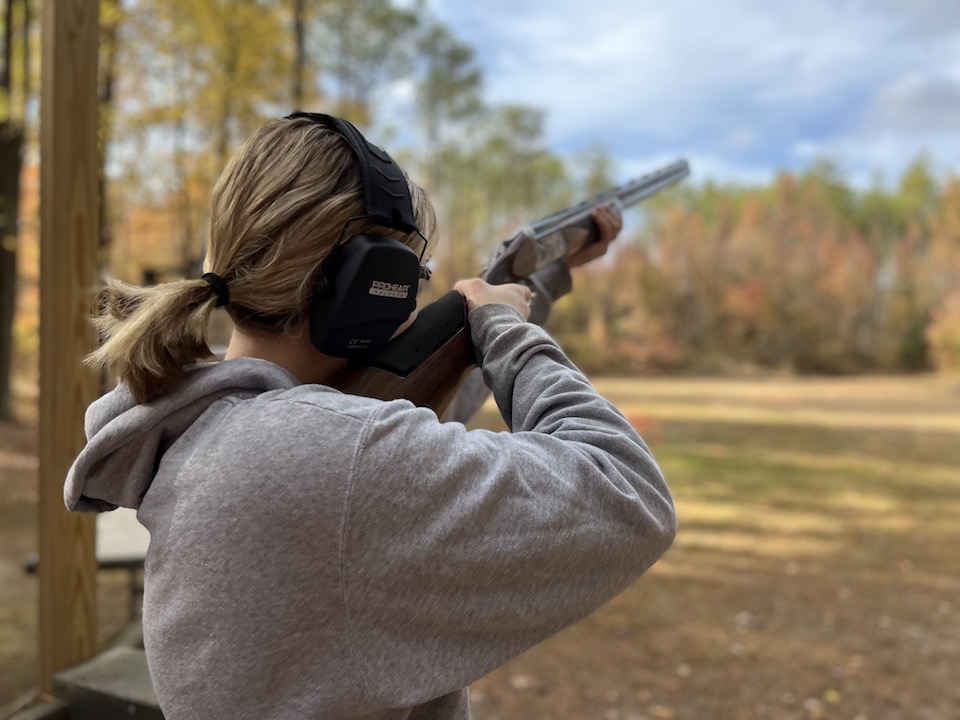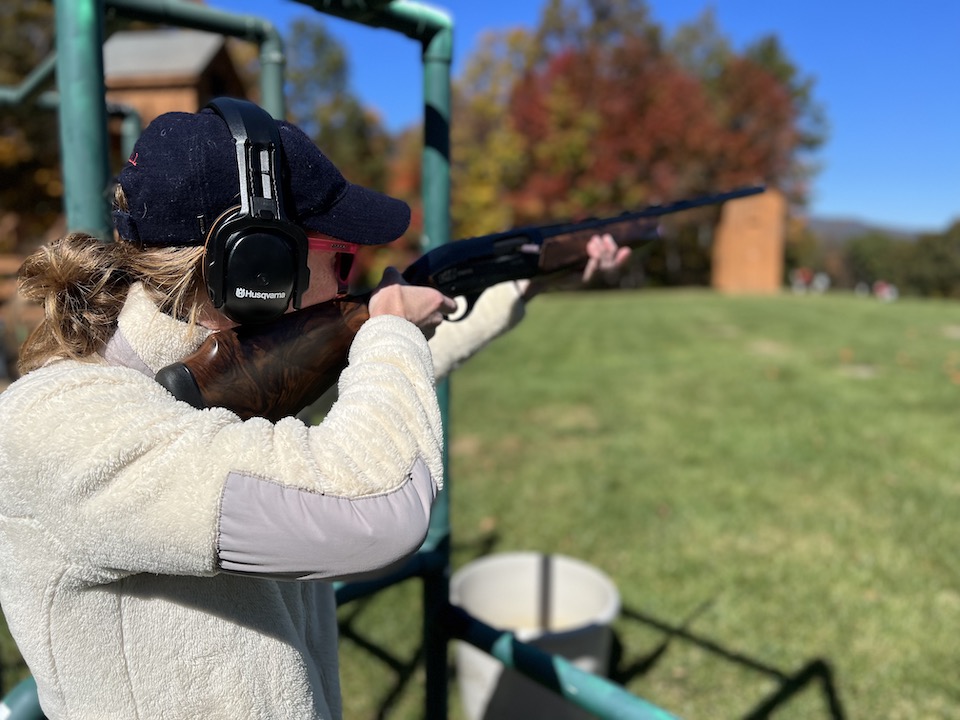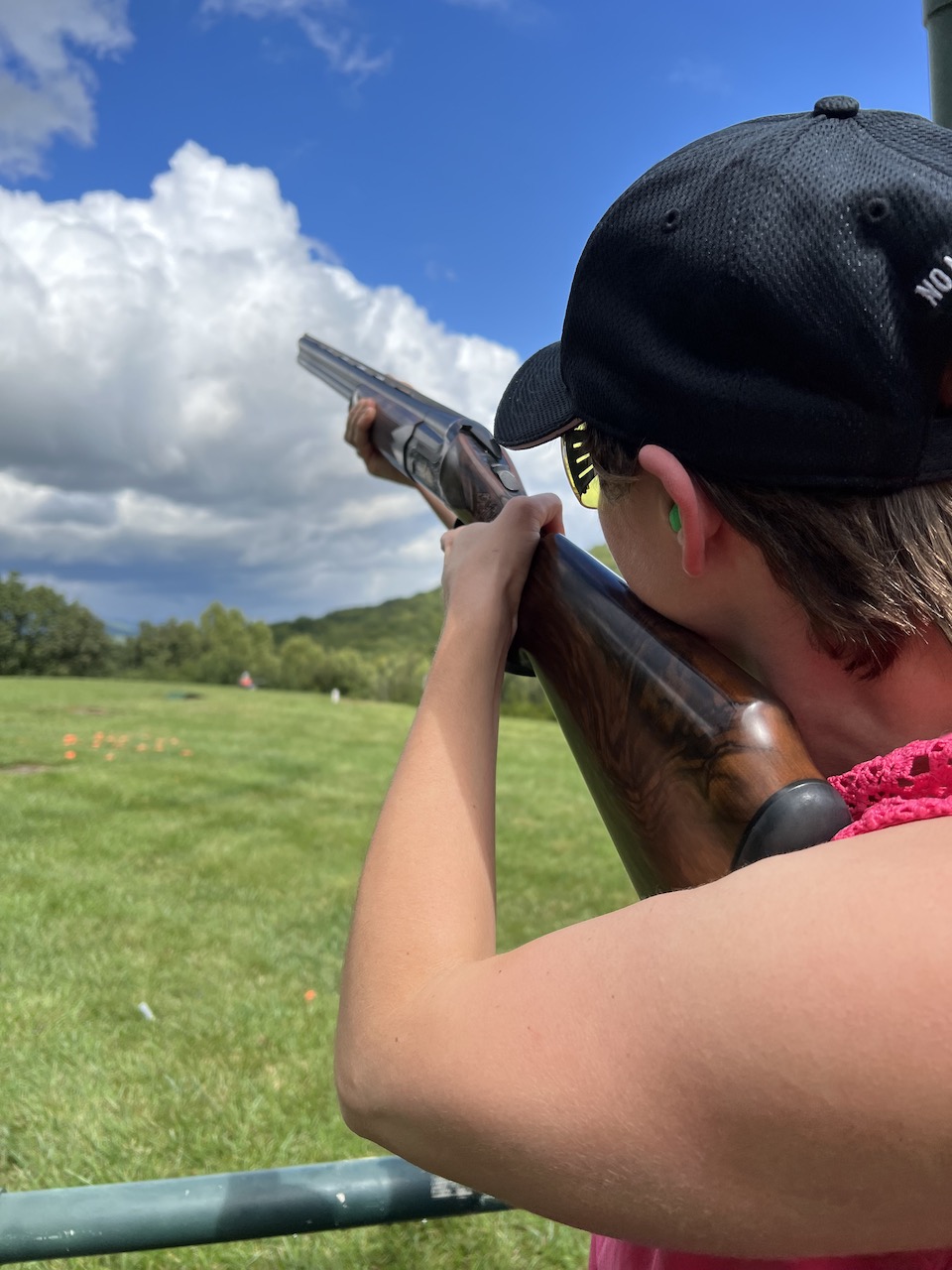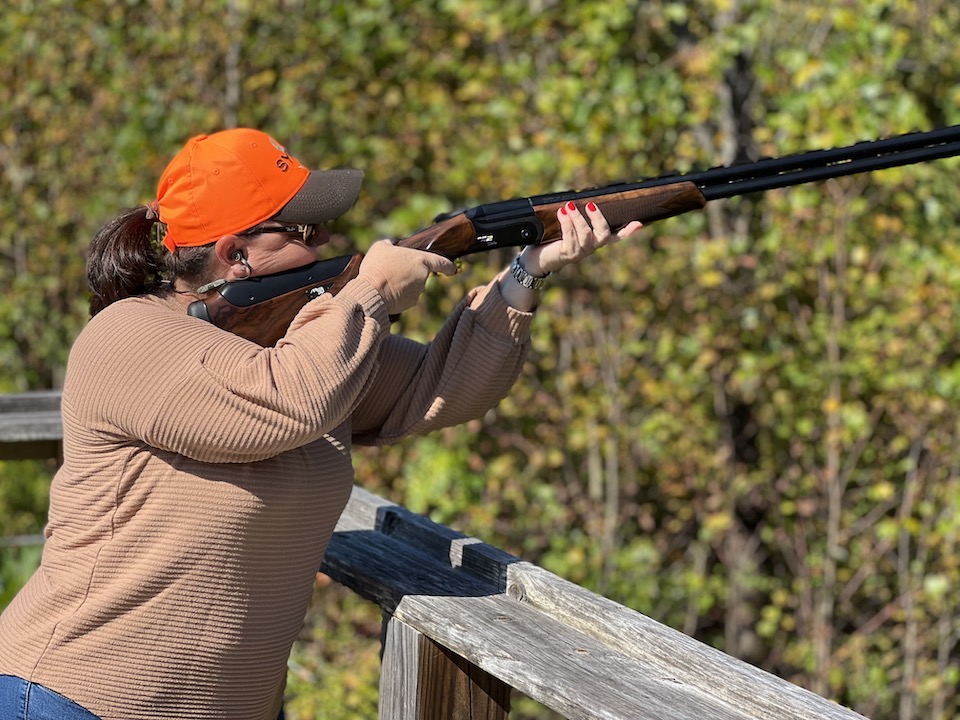Shotgun instructor Kate Ahnstrom describes a hold point and why you need to select one for success on the range or in the field.
Sponsored by Syren USA
The clays are flying and dying left and right at the end of your barrel. It’s as if the stars have aligned and the clay gods have blessed you with an uncanny ability to crush every bird in front of you. The following week, well it looks more like you’ve never shot a clay pigeon in your life. Ugh! What in the world has happened? The course is still set up the same way it was last week but for some unknown reason you’re off your game with no idea why.

Students frequently ask me why they have some days they can’t miss and other days that they can’t hit the broad side of a barn. The answer is always the same. They aren’t “holding” onto success. In other words, they are not putting the time and energy into selecting their hold points.
In order to fully answer the above questions, we need to understand what is meant by selecting a hold point. In any given presentation, a shooter must address a few core components to craft a plan on how to best break the bird. Now, I will be the first to jump up and run away at the very mention of higher math. It was never a strong suit of mine but, I am well aware that there is a pile of geometry involved in shooting with a dash of physics for good measure. That doesn’t mean I need a protractor and a pack of graph paper. Neither do you. All we need to know is right below!
There are two items marked to stand out: angle and hold point. That’s because you can be off on all the other components, but if you don’t have the hold point for the start of your swing and the angle at the break point correct, you will be whipping a lot of ammo down that field with dismal results. The hold point is 95% of your success at the break point. When it comes to the angle of the bird at the break point, well, stay tuned for more on that in a later issue!

Do you struggle to see the bird cleanly coming to your barrel?
Every now and again, we get into the shooter’s box and call for a bird just to stand there wondering if our trapper is messing with us or just didn’t hear our call to pull. Finally, we realize that the bird is indeed flying through the air. We just aren’t ever seeing it!
Did you get a demo? Do you start mounted in the gun or at your side? These two big factors will determine what you see and when you see it. If you forgo a demo, you need to start with an unmounted gun. Get the gun out of your face so that you can pick up the bird as quickly and cleanly as possible. Now, if you, like most clay shooters take advantage of a demo, then absolutely TAKE ADVANTAGE. The demo is to show you exactly what the bird is doing and your opportunity to put together a bullet proof plan.
Shotgunning is all about muzzle management. You can’t have that if your muzzle is flailing across the field and you’re perpetually hunting for the bird. You must get in the bird’s way and allow your muzzle to smoothly and consistently insert into the bird to start your swing.

Are there times that you feel you must chase after the bird?
The gun is loaded, you’re at your hold point, call “pull” and whoosh! The bird is going a bazillion miles an hour right past your barrel. Or is it? For some reason, shooters think if they start their swing either almost all the way back at the trap or even worse, looking right at the trap, they’ll have more time with the bird. There is no way to see that bird coming off the plate. It is fast and only a blur. That causes eye jump and a delay in your acquisition of the target translating into a delay in getting “on the bird” to start your swing. Therefore, you feel like you are chasing the bird.
Did you start your swing with a mistake, having to move up to or down to the bird to get onto it?
The bird flies from the trap and you do indeed see it coming, albeit not clearly. You might even feel your gun jerking around a bit at the start of the swing. When that bird flies, does it come straight to the barrel, or do you have to adjust up or down to get in the bird’s way? With the demo bird, comes a wealth of information. Watch the demo bird fly but pay attention to the background it flies through so that you can mark the flight path. There will be a branch, a twig, something that marks where you can first cleanly acquire a target and not just an orange blur. This area is your solid and bulletproof hold point.

How many times are you able to hit the bird at the same break point?
The name of the game in clays is consistency. The path to consistency is built on the bricks of solid fundamentals and a great game plan. With every demo bird, you need to select the ideal hold point. It may sound daunting, but after a few birds, you will begin to see your presentations in a whole new way. The hold points will start to light up and scream, “Catch the bird here!” and there will be some way to mark that spot with the background. Take time to study a demo bird and then get in that bird’s way. Remember if it feels too fast at the start, you are too close to the trap. When you correctly select a hold point, there will be no mistake that you will crush the bird. You can feel it before you even pull the trigger.
Remember that gun fit is paramount in shotguns. If you can’t see it, cause your eye is too high staring at the rib or too low staring at the receiver, you can’t shoot it. When it comes to gun fit for women, Syren has cornered the market in quality, craftsmanship and functionality. Take a moment to scroll through their amazing line of shotguns here.
Kate Ahnstrom, owner of Virginia Shooting Sports, is a certified, professional instructor of the Paragon School of Sporting. She has dedicated her life to sharing her passion for the outdoors and diversifying the dynamics on the clay course and the hunt field. Her tireless dedication to her students’ success is obvious in each and every lesson. Kate is on the pro staff for Syren, the resident pro at Orapax Hunting Preserve and the Preserve at Dundee, department editor for “Woods and Waters” magazine and field staff member of the Sisterhood of the Outdoors. She and her husband, Mike, enjoy their small farm in central Virginia where they have a menagerie of animals and plenty of room to train and work their beloved GSPs. Kate loves getting behind the barrel of her Syren Tempio Sporting in 20 gauge for all things clay and feathered. View all posts by Kate Ahnstrom